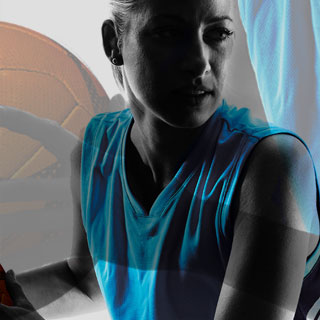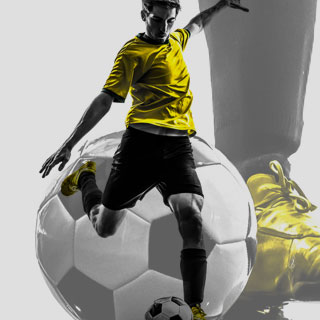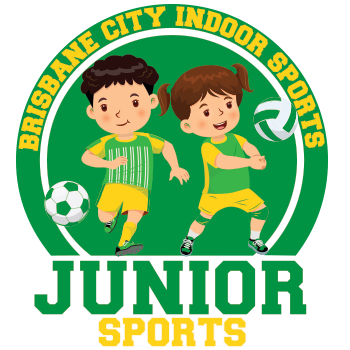Basic Netball Rules
Indoor Netball – Game Rules
Our Netball game rules are specific to Brisbane City Indoor Sports, though they are fundamentally structured around the Official Indoor Netball Federation of Australia rules.
The emphasis on our social competitions is enjoyment and respectful play. While competitiveness is not discouraged, please note that a ‘play at all costs’ attitude is not appropriate for BCIS competitions.
All rules are open to the interpretation of the Umpire and their decision is final.
All players are assumed to have read and understood these rules, and the BCIS Player Code of Conduct, prior to playing in competitions at Brisbane City Indoor Sports.
GENERAL RULES
- Each team consists of 7 players on the court and up to 4 substitutes.
- For mixed competitions there can be a maximum of three and a minimum of two males on the court at any one time.
- Male players must be in three different thirds of the court, i.e. Defending, Centre or Attacking.
- Appropriate and enclosed footwear must be worn. Jewellery of any kind is not permitted.
- Fingernails must be cut short or taped (unless gloves are worn) to the satisfaction of the Umpire. All players’ fingernails will be checked prior to the game commencing.
- Watches/smartwatches/fitness bands may be not be worn due to player safety requirements.
STARTING PLAY
- The game is commenced and restarted after each goal, or at the beginning of each quarter, alternatively by the centres of each team, regardless of who has scored.
- To do so, the centre must stand, step, or jump into the centre circle with at least one foot entirely within the centre circle (the line is classed as part of the circle). Once the Umpire has blown the whistle, the centre has three seconds to pass the ball.
- The centre pass must be caught by a player who
- Is standing in the centre third
- lands with the first landed foot, or both feet, entirely inside the centre third, or
- jumps from a stance entirely inside the centre third.
PLAYING AREA
- The court is divided into standard thirds as defined by INFA rules and surrounded by an enclosing net.
- The ball does not go out of play in Indoor Netball.
- Goals may only be scored from with the goal circle by the Goal Shooter (GS) or Goal Attack (GA). Over a Third Rule
- The ball may not be thrown over a complete third without being touched or caught by a player within that third.
- Players may use the nets to direct the ball in a pass to another player, except for the centre pass which must be touched by another player in the centre third before touching the net.
- Players may not step, land, or jump into the net whether they are in possession of the ball or not.
- Players may not use the nets to ‘push off’, or hold the ball into the net to ‘push off’, to gain an advantage.
- The nets may not be used to ‘pin’ a player in such a manner which would restrict their movement
Net abuse
Offsides
- Players must remain in their designated playing areas as follows, otherwise they will be deemed offside:
| Goal Keeper | Allowed in the defensive goal third and shooting circle |
| Goal Defence | Allowed in the defensive and centre thirds, and the shooting circle |
| Wing defence | Allowed in the defensive and centre thirds, but not the shooting circle |
| Centre | Allowed in all thirds but not in either shooting circle |
| Wing Attack | Allowed in the attacking and centre thirds, but not in the shooting circle |
| Goal Attack | Allowed in the attacking and centre thirds, and the shooting circle |
| Goal Shooter | Allowed in the attacking third and shooting circle |
- A player may reach over and take the ball from an offside area provided that no part of their body touches the ground in that area.
GOAL SCORING
- Goals may only be score from within the offensive goal circle, by the GA or GS positions.
- A goal must be scored by throwing the ball completely through the goal ring, and the scorer must have no contact with the ground outside the goal circle (this includes pivoting from outside the goal circle to inside the goal circle).
- Defending players may not deflect the ball during its downward movement towards the ring, including through the net.
- If the Umpire’s whistle to end a quarter is blown before the ball has fully passed through the ring, then the goal will not be allowed.
BASIC PLAYING RULES AND INFRINGEMENTS
Stepping
- Single foot landing – If a player lands on a single foot they may step with the other foot and lift the landing foot, but the ball must be released before the landing foot is re-grounded. Dragging or sliding the landing foot is not allowed.
- Two foot landing – If a player lands with both feet simultaneously, they may step in any direction with either foot and lift the second foot, but the ball must be released before the second foot is re-grounded.
- Pivoting – A player may pivot on one foot and step in any direction with the other foot. If the grounded foot is lifted, then the ball must be released before it is re-grounded.
Replays
- After a player takes possession of the ball, they may not bounce the ball and regain possession.
- If the ball is not collected cleanly to take possession, the player may bounce or bat the ball to gain full possession or pass the ball.
- Whether or not the player has taken possession of the ball will be decided by the umpire.
- A player may not use a striking motion with a fist to control or pass the ball.
- For a fair pass to be made there must be enough room between passer and receiver for a third player when the ball is played.
- A player cannot make contact with another player either deliberately or accidentally if it interferes with an opponent’s play.
- A player may not move into the path of an already moving opponent.
- A player may not move into the natural landing area of an opponent once the opponent has left the ground.
- Players can not use the ball to contact an opponent in a way which interferes with the opponent’s play.
- A defending player cannot put hands on the ball, either intentionally or deliberately, in a way which interferes with the opponent’s play.
Short Passes
Contact
Obstruction
- Defending players may not be within 3ft (1m) of the offensive player when trying to intercept or defend the ball.
- The distance will be measured from the first landing foot of the offensive player and the nearest foot of the defending player.
- A defender may stand closer to the offensive player if their arms are not extended and the player in possession of the ball can move the ball freely around their body.
- If the attacking player chooses to move closer to the defender in their passing or shooting action, then this is not considered obstruction.
Intimidation
- Players shall not use intimidating actions or words towards an opponent with or without the ball.
- What constitutes intimidation will be entirely down to the decision of the umpire.
PENALTIES
Penalty Pass or shot
- A penalty pass is awarded for contact, intimidation, or obstruction fouls.
- The pass is to be taken from where the person who made the infringement was standing unless the offensive player is placed at a disadvantage.
- A penalty pass can be taken by any player allowed in this area
- The pass can either be made immediately, or once the penalised player has moved out of the way.
- The penalised player must not attempt to play or intercept the penalty pass, or the pass will be retaken.
- If the penalty pass is awarded to a Goal Attack or Goal Shooter within the goal circle, then they may attempt to shoot for a goal – this is a Penalty Shot.
Free Pass
-
A free pass is awarded for other infringements on the court.
- A free pass will be taken where the infringement occurred and can be taken by any player allowed in that area.
- The offending player does not need to stand next to the player taking the free pass.
- If a free pass is awarded within the shooting circle, the player taking the free pass may only pass the ball and may not shoot.
Advantage
- Advantage should be played when an infringement has occurred, but the non-offending team would be disadvantaged by stopping play. • By calling ‘Advantage’ the umpire acknowledges that an infringement has been seen but has decided that it is in the best interests of the attacking team to keep play going. • The umpire alone will determine whether advantage will be played
Toss Ups
A toss up will be used to restart play in the following situations:
- Opposing players simultaneously contact each other.
- Opposing players simultaneously take possession of the ball.
- Opposing players are simultaneously offside, with one of them in possession of the ball.
For the act of the toss up the two players shall
- stand 1 metre apart facing each other and their own goal end • have their arms straight down by their sides • not move until the umpire has tossed the ball into the air and blown the whistle • The ball may be batted to a teammate but not at an opponent or the umpire • A goal shooter or goal attack may shoot for goal if they take possession of a toss up.
PLAYER BEHAVIOUR
Rough or dangerous play, abusive language, bickering and challenging the umpire’s decisions or authority will not be tolerated.
Rough or dangerous play includes, but is not limited to, any act or play which in the umpire’s opinion places the safety of any player at risk.
In most instances the following will apply:
- One verbal warning will be given by the umpire
- For a second offence, the player will be asked to leave the court for 3 centre passes.
- A third offence will result in the player being sent off for the remainder of the game.
The umpire is at any stage of the game entitled to send off any player or team for any length of time if they feel it is necessary to ensure player safety or effectively control the game without disruption.
On rare occasions, players may be suspended or permanently excluded from competitions for repeated and/or extreme cases of behavioural issues, disrespectful communications to opponents or staff, or dangerous play.
This will be entirely at the discretion of BCIS Management and all decisions are final.






